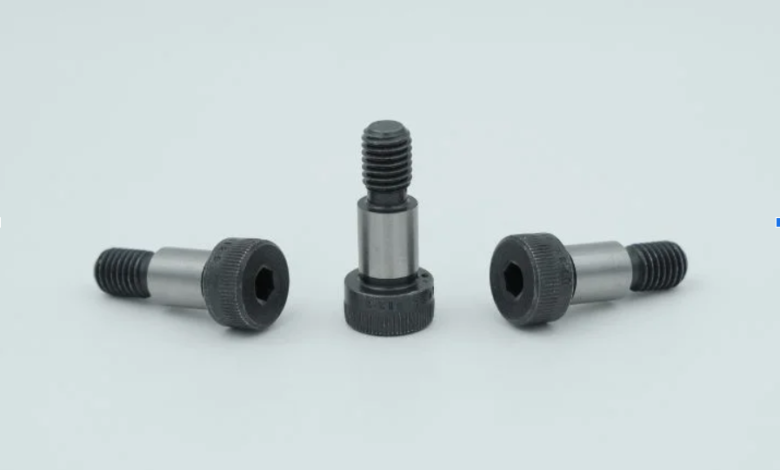How Shoulder Bolts Enhance Load Distribution in Mechanical Designs

Mechanical systems face constant stress from operational loads that can compromise their structural integrity over time. Engineers must carefully select fastening solutions that can withstand these forces whilst maintaining system reliability. Poor load distribution creates stress concentrations that accelerate component failure and increase maintenance costs significantly.
Shoulder bolts represent a specialised fastening solution designed specifically for applications requiring precise load distribution and controlled movement. These components feature a distinctive cylindrical shoulder section that separates the threaded portion from the head, creating a bearing surface for rotating or sliding components. This unique geometry allows shoulder bolts to handle both axial and radial loads more effectively than standard threaded fasteners.
Understanding Shoulder Bolt Construction
Distinctive Design Elements: Shoulder bolts differ fundamentally from conventional bolts through their multi-diameter construction and precision-machined surfaces. The shoulder section maintains tight tolerances that serve as a bearing surface for moving parts. This design eliminates the stress concentrations typically found where threaded sections meet component surfaces, distributing loads across a much larger contact area.
The threaded portion remains separate from load-bearing surfaces, preventing thread damage that commonly occurs when standard bolts experience lateral forces. This separation allows the bolt to function as both a fastener and a pivot point, supporting rotational movement without compromising structural integrity.
Material Selection and Manufacturing: Quality shoulder bolts undergo precision manufacturing processes that ensure dimensional accuracy and surface finish consistency. Heat treatment processes enhance material properties, creating optimal strength-to-weight ratios for demanding applications. Surface treatments like zinc plating or anodising provide corrosion resistance whilst maintaining the precise tolerances required for proper fit.
Load Distribution Mechanisms
Stress Concentration Reduction: The shoulder section creates a uniform bearing surface that spreads loads across a wider area compared to threaded fasteners. This distribution prevents localised stress peaks that typically occur at sharp transitions between different bolt diameters. The smooth shoulder surface eliminates stress risers that contribute to fatigue failure in high-cycle applications.
Traditional bolts create stress concentrations where threads engage with components, leading to premature failure under dynamic loads. Shoulder bolts address this limitation by isolating threaded sections from primary load paths, allowing threads to serve purely as retention mechanisms rather than load-bearing elements.
Dynamic Load Management: Moving assemblies benefit significantly from shoulder bolts’ ability to accommodate both static and dynamic forces. The precision shoulder acts as a journal bearing surface, supporting rotational movements whilst controlling radial positioning. This dual function reduces wear on mating components and maintains assembly tolerances over extended service life.
See also: Choosing the Right Video Editing Company for Your Photography Business
Applications in Mechanical Design
Pivot and Hinge Mechanisms: Shoulder bolts excel in applications requiring controlled rotation or oscillation between components. Door hinges, machinery arms, and linkage systems rely on these fasteners to provide smooth movement whilst maintaining structural alignment. The bearing surface reduces friction and wear compared to standard bolts used in similar applications.
Mechanical Linkages and Assemblies: Complex mechanical systems often incorporate shoulder bolts at critical pivot points where precise movement control is essential. These applications include:
- Automotive suspension components where controlled movement and load distribution are critical for performance and safety.
- Industrial machinery linkages that require precise positioning and smooth operation under varying load conditions.
- Aerospace mechanisms where weight savings and reliability are paramount considerations.
- Manufacturing equipment where consistent positioning affects product quality and operational efficiency.
Sliding and Linear Motion Systems: Applications involving sliding movements benefit from shoulder bolts’ ability to provide guidance whilst accommodating linear forces. The shoulder acts as a bearing surface for sliding components, reducing friction and preventing binding that can occur with conventional fasteners.
Durability and Wear Prevention
Extended Service Life: The separation of load-bearing and retention functions significantly extends shoulder bolt service life compared to conventional alternatives. Threading remains protected from operational stresses, preventing the thread damage that commonly necessitates bolt replacement in high-stress applications.
Regular lubrication of the shoulder bearing surface maintains smooth operation and prevents galling or seizure. Proper material selection and surface treatments provide excellent corrosion resistance, particularly important in outdoor or harsh environment applications.
Maintenance Advantages: Shoulder bolts typically require less frequent replacement than standard bolts in similar applications. The robust design handles abuse better, and the bearing surfaces can often be refurbished rather than requiring complete replacement. This reduces maintenance downtime and long-term operational costs.
Design Optimisation Benefits: Engineers can specify lighter components when using shoulder bolts because loads distribute more evenly throughout the assembly. This weight reduction provides cascading benefits in applications where mass affects performance, such as automotive or aerospace systems.
Selection Criteria and Considerations
Load Requirements and Environmental Factors: Proper shoulder bolt selection requires careful analysis of expected loads, environmental conditions, and required service life. Factors including temperature extremes, corrosive environments, and cyclic loading patterns influence material and coating choices significantly.
Engineers must consider both static and dynamic load components, as well as any side loads that might affect bolt performance. The shoulder diameter and length must accommodate expected loads whilst providing adequate bearing surface area for the application requirements.
Conclusion
Shoulder bolts provide superior load distribution capabilities that enhance mechanical system durability and performance across numerous applications. Their unique design addresses common failure modes associated with conventional fasteners whilst providing additional functionality for moving assemblies. Engineers seeking to improve system reliability and reduce maintenance requirements should evaluate shoulder bolts for applications involving pivoting, sliding, or high-stress fastening requirements. Consider consulting with fastening specialists to determine optimal shoulder bolt specifications for your specific mechanical design challenges.




